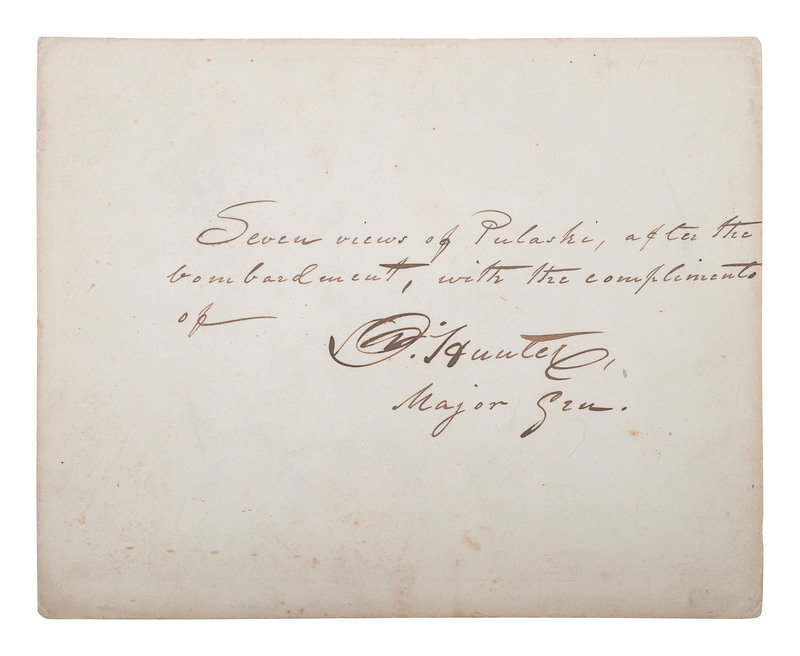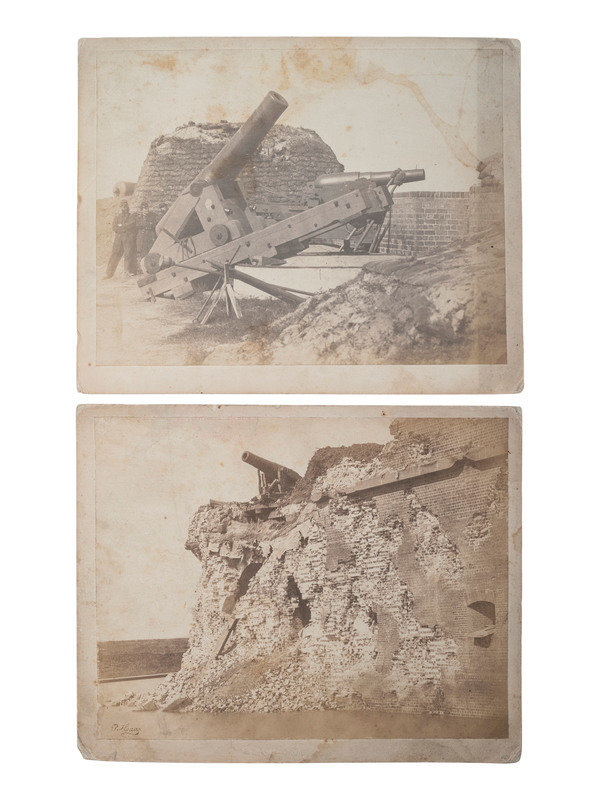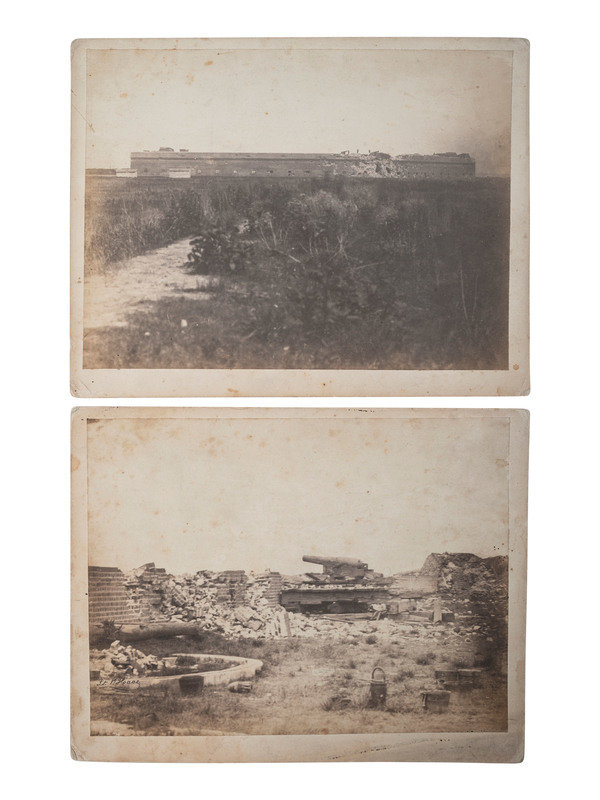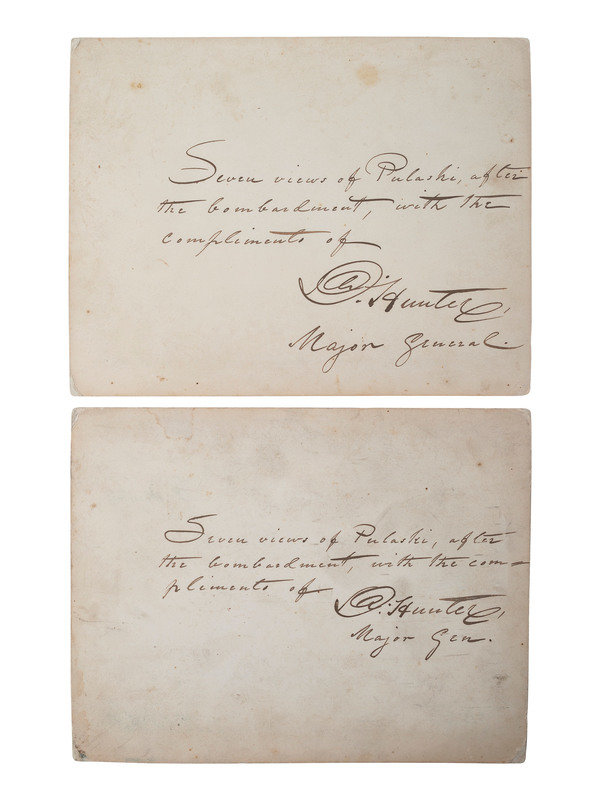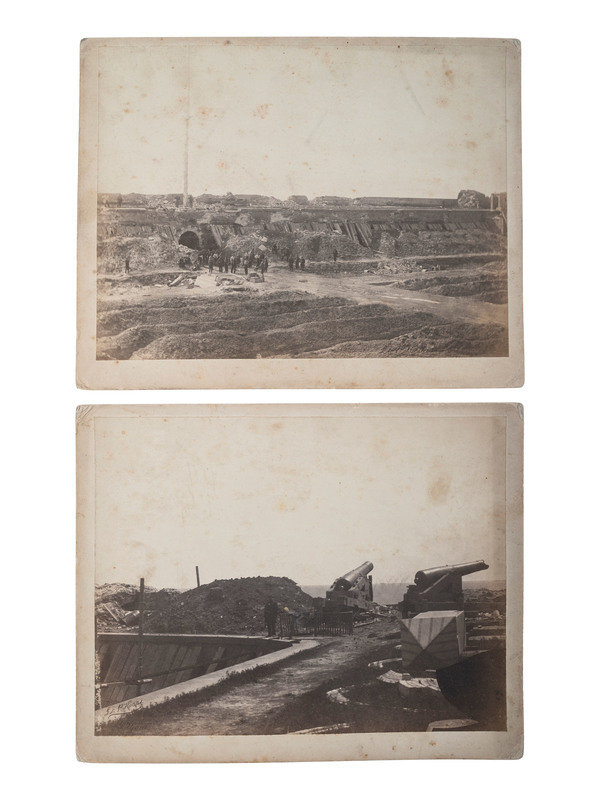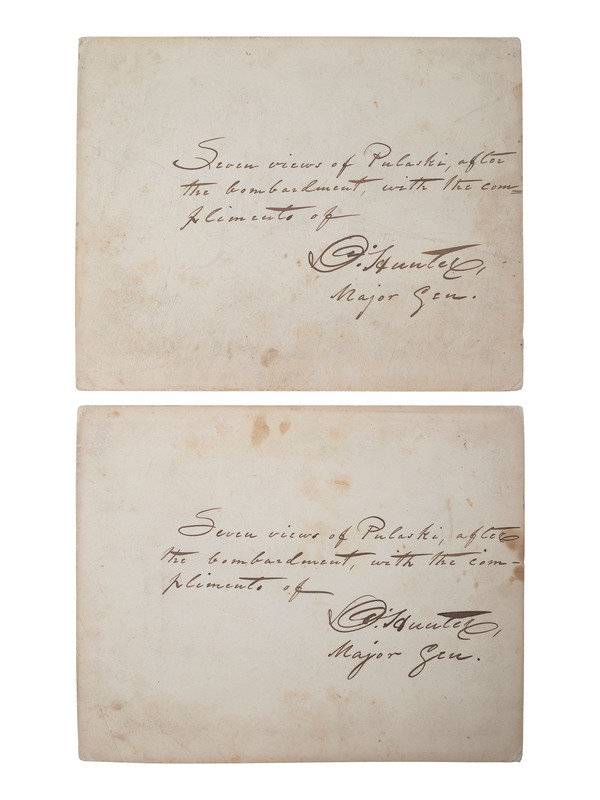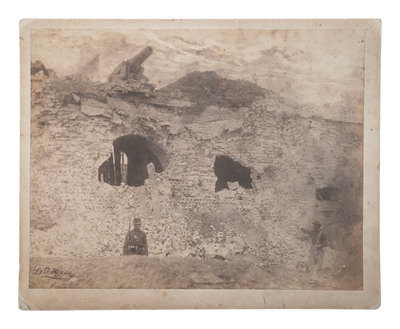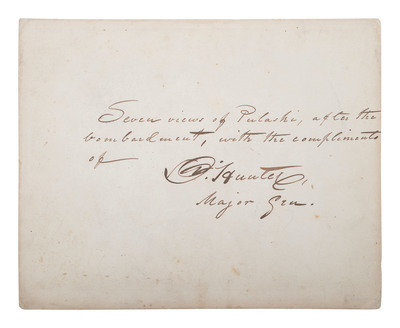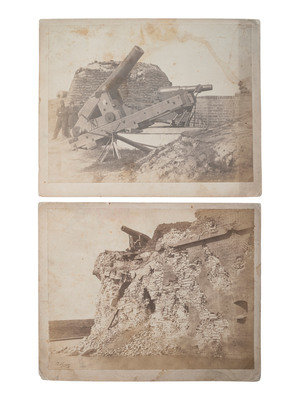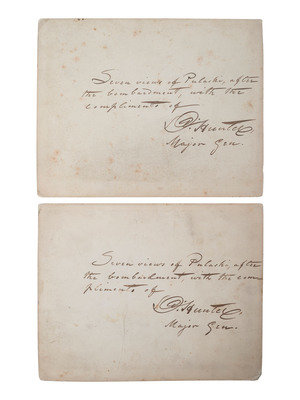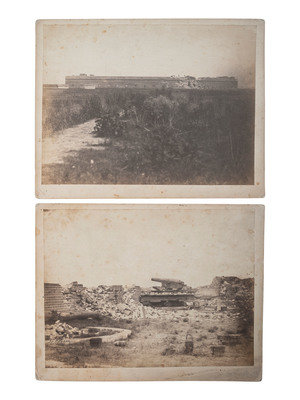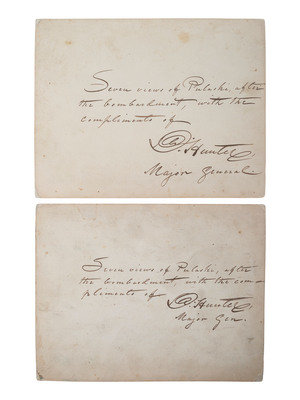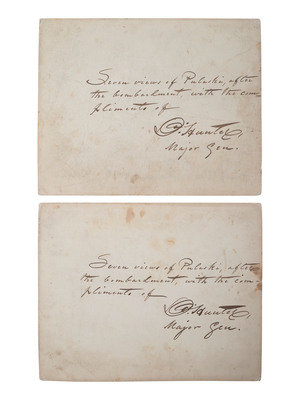[CIVIL WAR]. HAAS, Philip, Lt., photographer. A group of 7 photographs of Fort Pulaski after the bombardment, inscribed and signed by Major General David Hunter.
Sale 1046 - American Historical Ephemera and Photography Featuring the Civil War and American Militaria Collection of Bruce B. Hermann
Lots 1-296
Jun 21, 2022
10:00AM ET
Lots 297-560
Jun 22, 2022
10:00AM ET
Live / Cincinnati
Own a similar item?
Estimate
$3,000 -
5,000
Lot Description
[CIVIL WAR]. HAAS, Philip, Lt., photographer. A group of 7 photographs of Fort Pulaski after the bombardment, inscribed and signed by Major General David Hunter.
Each 8 7/8 x 6 15/16 in., or slightly smaller, albumen photograph on cardstock mount (overall light toning, some spotting and soiling throughout, with wear/creasing to mount edges and corners). Most signed in the negative by Lt. Philip Haas. Each inscribed and signed by Major General David Hunter on verso: "Seven views of Pulaski, after the bombardment, with the compliments of D. Hunter, Major Gen."
Images include a view of the fort from a distance, primarily showing the heavy damage to the southeast corner, including multiple penetrations; a close-up view of two major breaches to the fort, featuring one non-uniformed subject pointing toward one of the openings in the wall, and a uniformed subject, standing beneath the other; another close-up view of the breaches from a different angle; an close-up view of Confederate artillery atop the fort, including an 8-inch smoothbore gun with its carriage tilted up at an extreme angle to allow the gun to act as a heavy mortar; a view from a distance showing a large group of men, many in uniform, standing and sitting amidst rubble outside of the sally port; and others.
When Georgia seceded from the Union in February of 1861, Confederate forces under Colonel Charles Olmstead took control of Fort Pulaski, located at the mouth of the Savannah River on Cockspur Island. Control of the stronghold was crucial to both Confederate and Union forces. Union occupation of the fort would mean extending their blockade and commanding the entrance to an important port city for the South.
On 19 February 1862, General Thomas W. Sherman commanded Quincy Gillmore (Eng. Corps) to prepare for a siege of the fort. Gillmore's men constructed a series of artillery batteries on Tybee Island, across from Fort Pulaski, and commenced the bombardment on 10 April. The work of heavy artillery, especially the 84-pounder and 64-pounder James rifles, penetrated the thick brick wall of the fort in multiple places, and by the following day, Colonel Olmstead surrendered.
Not only was the victory an important one for the overall federal war strategy, but it also illuminated the strength of heavy artillery against what were previously thought to be impregnably constructed strongholds. General Hunter's commentary on the bombardment in his report to the Secretary of War presciently concluded that "[The bombardment of Fort Pulaski] must cause a change in the construction of fortifications as radical as that foreshadowed in naval architecture by the conflict between the Monitor and Merrimac. No works of stone or brick can resist the impact of rifled artillery of heavy calibre."
Condition Report
Auction Specialist

